With most of our winter weekends taken up with work on the house, we planned a weekend away from the mess for my birthday. With the snow not looking great in the mountains, we decided that we would head down to the Otago Peninsula just outside Dunedin for some sightseeing.
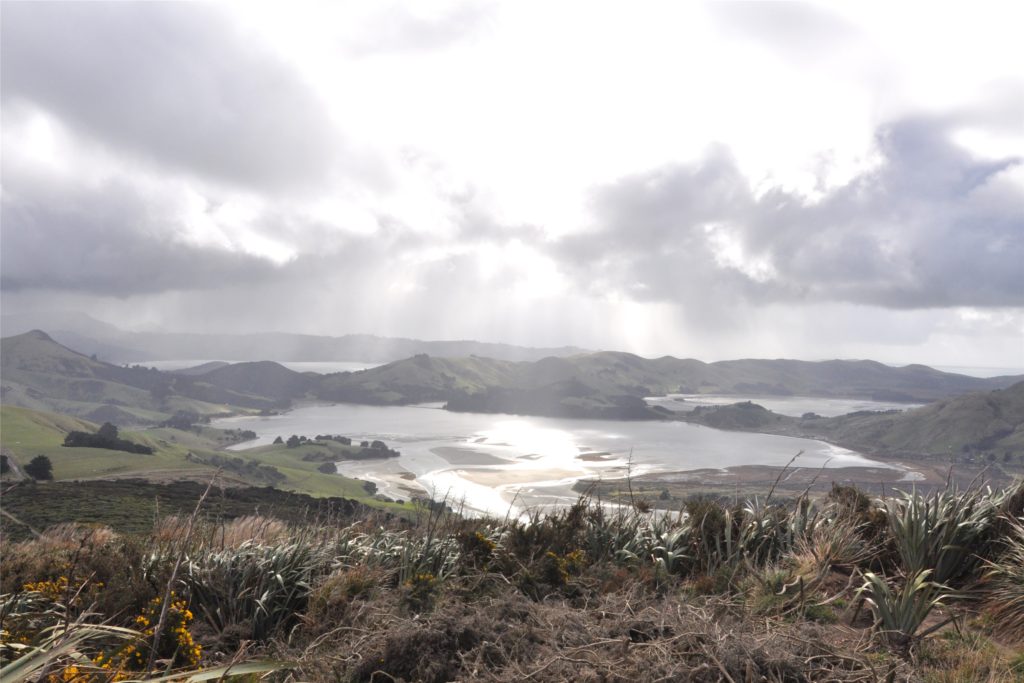
After stopping overnight in Oamaru, we continued south on Saturday morning to the Sandymount Track on the southern side of the peninsula. Despite the slightly grey start to the day, the clouds seemed to be lifting and so we decided to risk the quick loop track to one of the highest points on the peninsula.
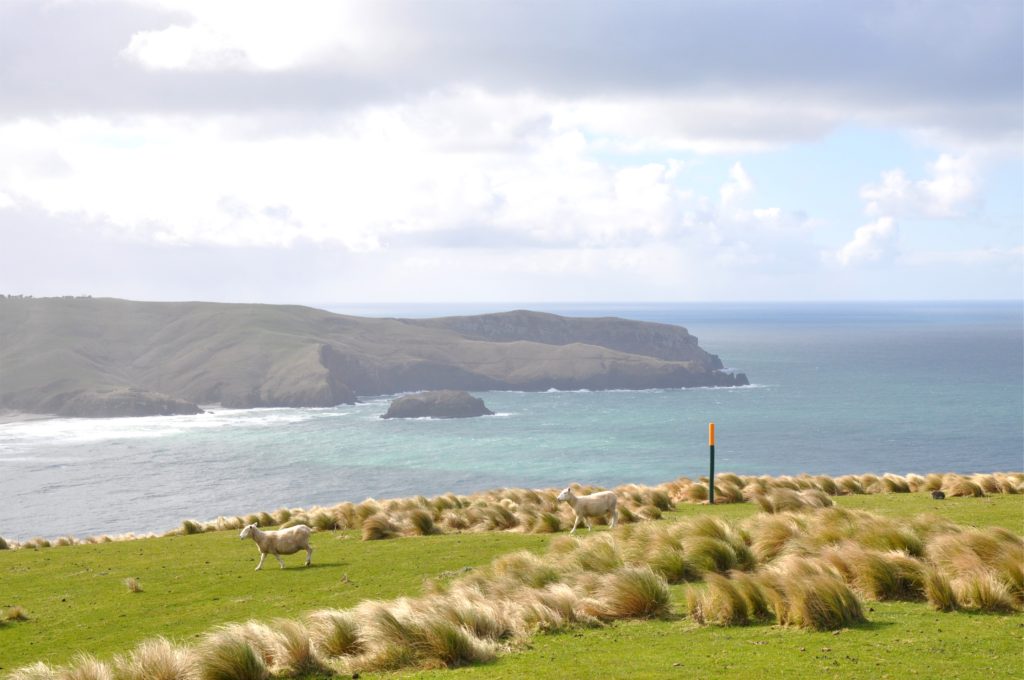
As we came out of the trees we found ourselves being buffeted by the strong southerly winds. The steep cliffs and stormy weather didn’t seem to bother the sheep that trotted past us.
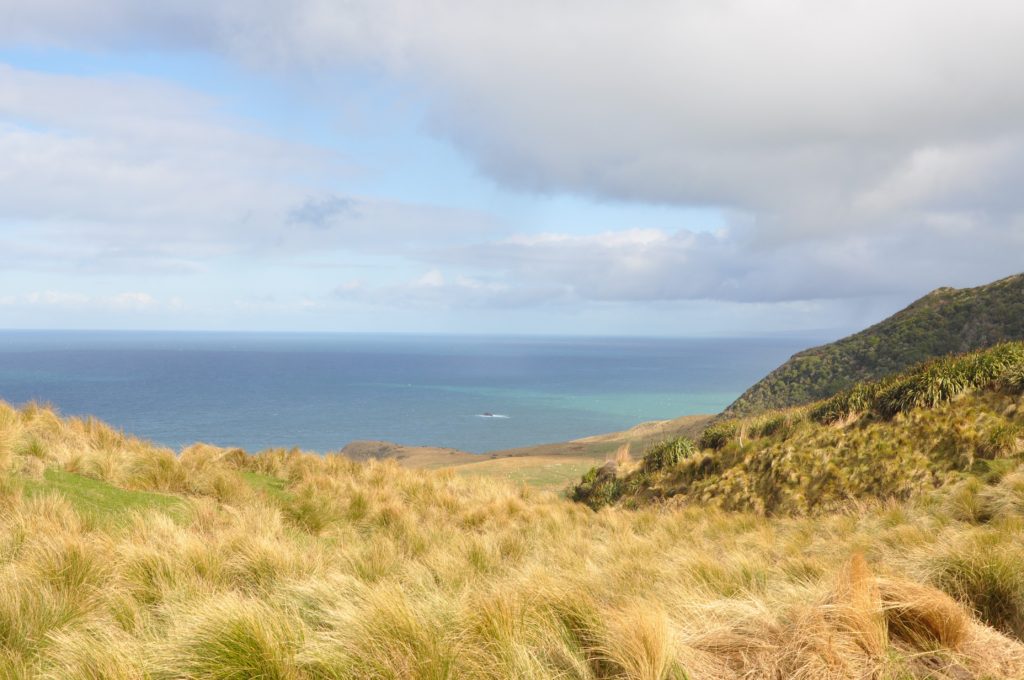
The track continued around the headland and as the wind continued to blow the clouds started to lift and we were rewarded with views out across the ocean.
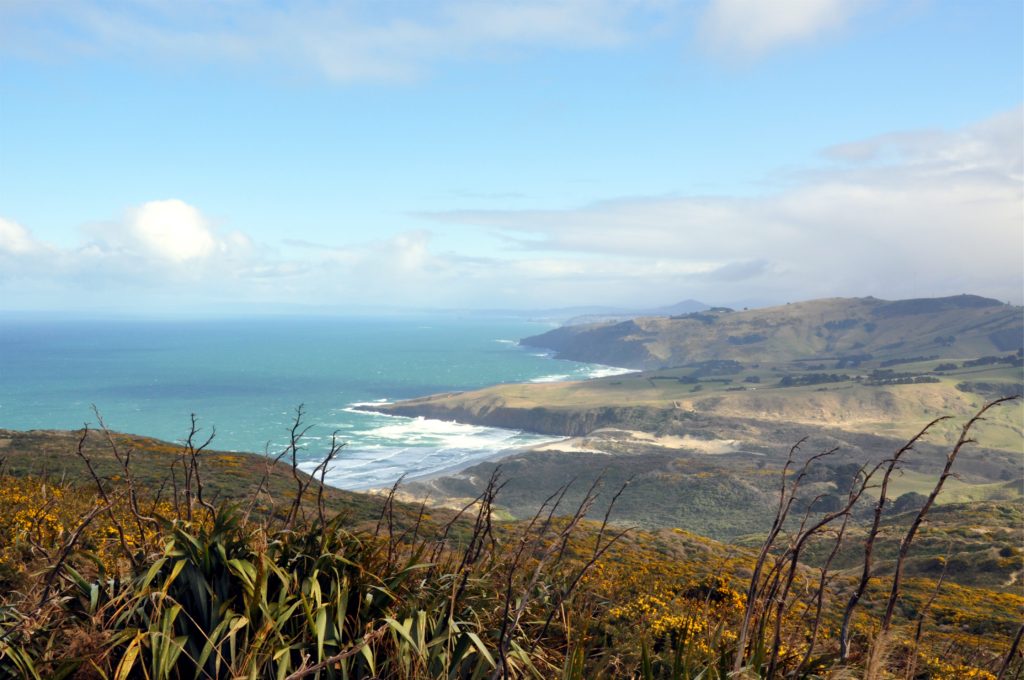
The loop track started climbing steeply to reach the top of Sandymount, 320 metres (1,050 feet) above sea level. From the top of the hill we were able to look out over Sandfly Bay; a beautiful bay we had visited on a previous trip where we were lucky enough to see penguins and fur seals.

We headed back to the car and continued out towards the tip of the peninsula to the Royal Albatross Centre. The headland at the end of the Otago Peninsula is the only mainland breeding colony of the Northern Royal Albatross and the centre helps support this endangered species. The winds that had been buffeting us all day turned out to be to our advantage as the ranger explained that the albatross are more likely to be flying on windy days and we were fortunate enough to see several gliding past the bird hide at the centre.
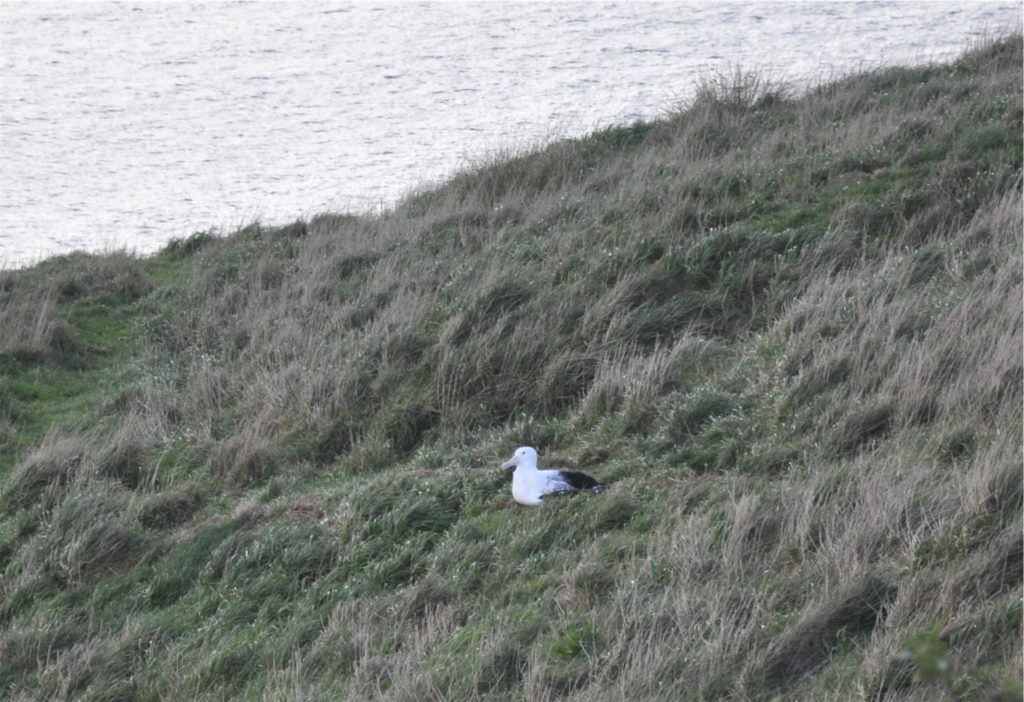
It is hard to get a sense of scale from the pictures; the adult birds have a wingspan of three metres (almost ten feet)! Our visit in late August coincided with the end of the breeding season and the bird above was one of the juveniles waiting to fledge. Once they leave Taiaroa Head the birds will spend between three and eight years in the Southern Ocean before completing a full circumnavigation to return to the same area.

Our next stop was Larnach Castle, a Gothic Revival building that claims to be ‘New Zealand’s only castle’. We timed our visit so that we could head into the ballroom for afternoon tea in front of the fire. The castle dates back to the 1870’s and was built from a huge amount of imported materials including cobbles from Marseilles, bricks from Glasgow and marble from Italy.
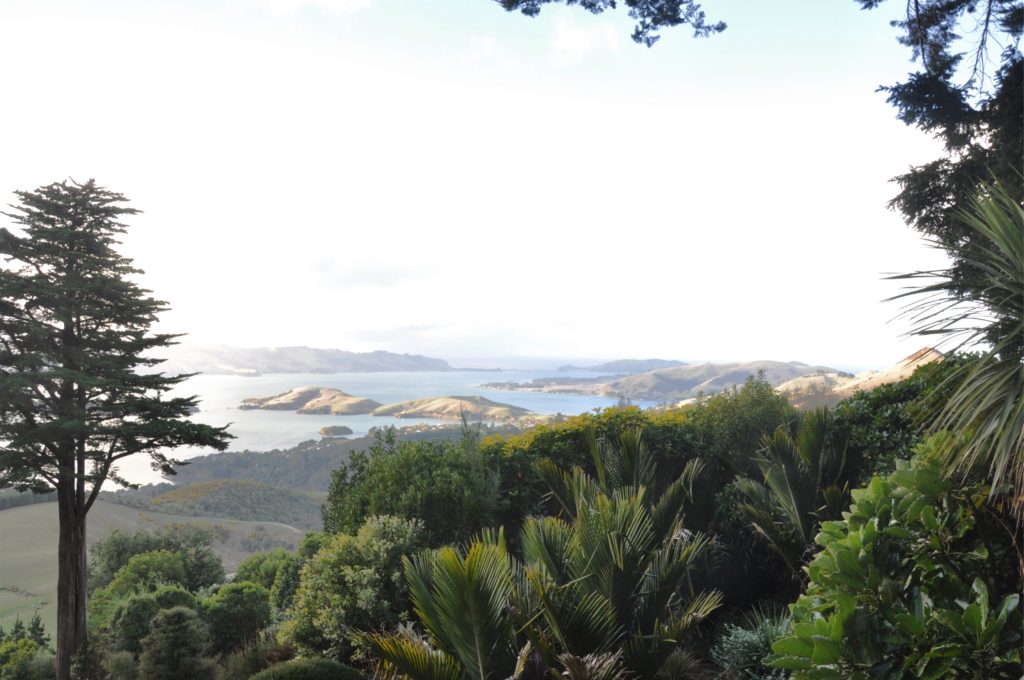
After warming up in front of the fire, we decided to head out to explore the gardens in the last of the daylight. The entire estate had fallen into disrepair by the 1960’s but gradually, with the help of some of the original gardeners they have been able to restore the gardens, which are now considered a ‘Garden of International Significance’ by the New Zealand Garden Trust. With just a few snowdrops braving the winter weather, we weren’t able to get the full effect of the plantings, although we did enjoy walking through the South Pacific and Native gardens to get some ideas for taming our wild hillside!
